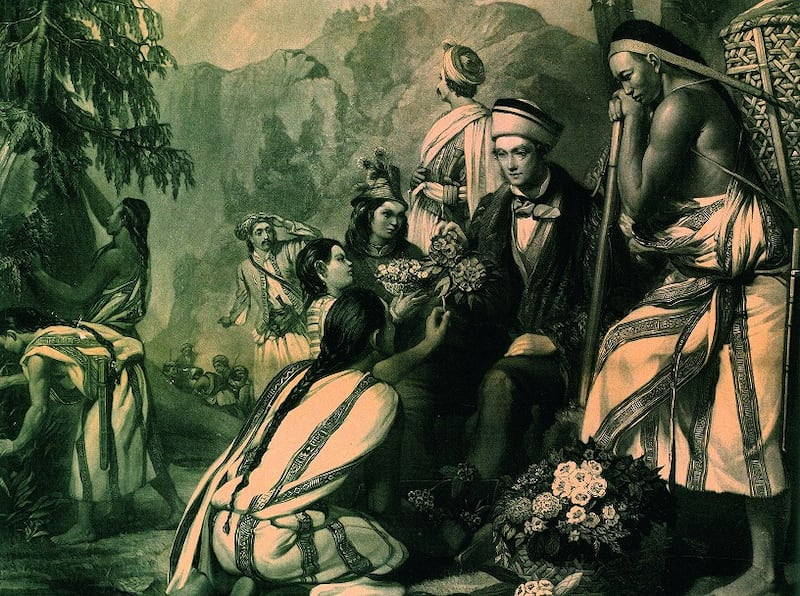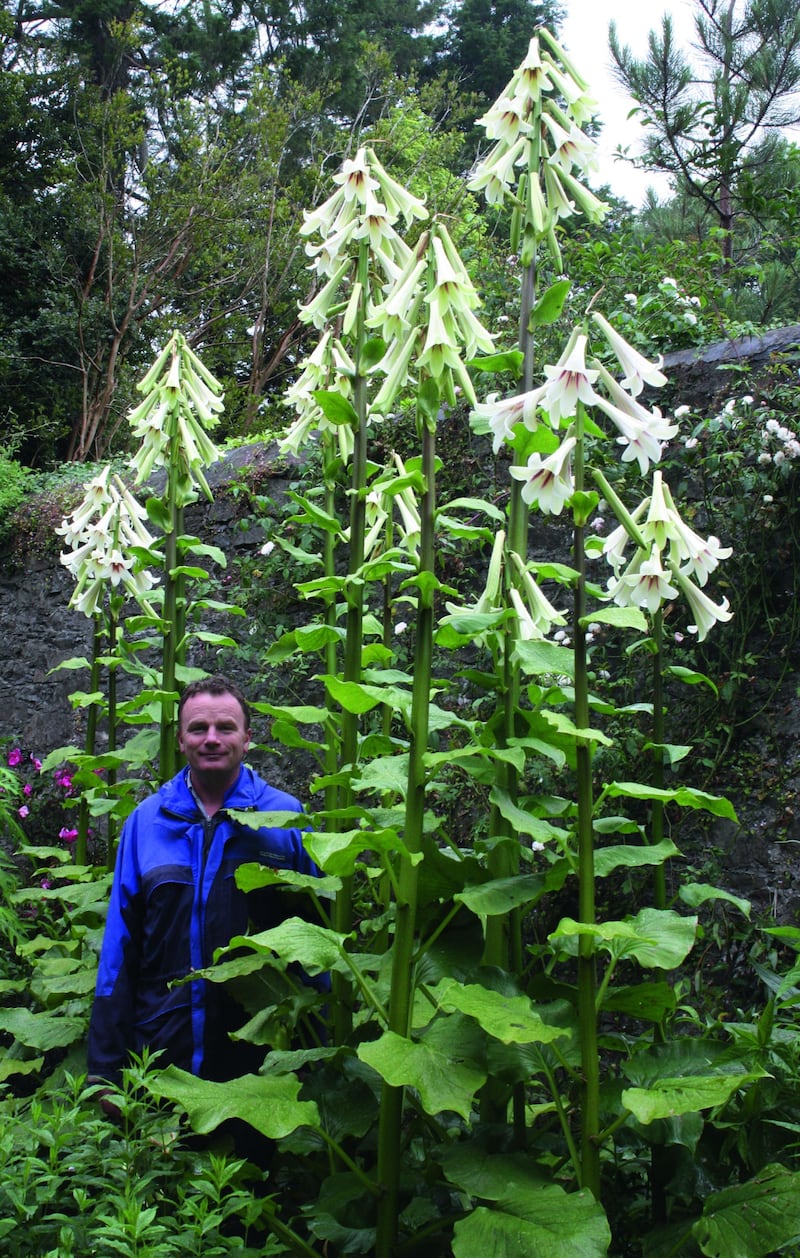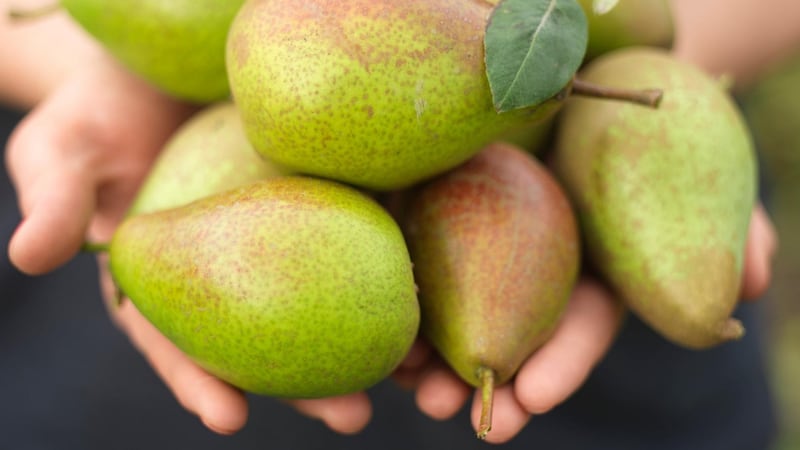Have you ever paused to wonder where the plants that grow in our Irish gardens and parks originally come from?
It might be a surprise to learn that some of the loveliest species hail from Sikkim, a tiny Indian state in eastern Himalaya prized among plant-hunters, botanists, horticulturists and ecologists for its astonishingly rich diversity of native plants.
As to the question of how they first made their way from one of the planet's best-known biodiversity hotspots to a small, damp island on the western edges of Europe, it's a fascinating story of empire-building and derring-do that stretches across centuries. At its heart is a remarkable Victorian explorer, botanist, cartographer and close confidante of Charles Darwin by the name of Joseph Dalton Hooker. His plant-hunting expeditions in Sikkim have provided the inspiration for an outstanding new book by one of Ireland's most brilliant horticulturists, Seamus O'Brien, head gardener of the Office of Public Works-managed National Botanic Gardens at Kilmacurragh in east Wicklow.
Hooker was one of the first westerners to set foot in the tiny kingdom of Sikkim and to scientifically observe, record and collect its extraordinarily rich diversity of plant species
Born in Suffolk, Hooker (1817-1911) lived in an age when the British Empire was at its most expansionist and the international trade in plant-based commodities – examples include tea, opium, cotton, tobacco, spices, indigo and timber –was so lucrative that it had allowed the British East India Company to effectively colonise large parts of the world including India.
Like his father William Jackson Hooker before him, the adventurous and academically brilliant Hooker would go on to become one of the most distinguished directors of the Royal Botanic Gardens, Kew – a role he took on with characteristic gusto in middle age. But as a young man, Hooker was also one of the first westerners to set foot in the tiny kingdom of Sikkim and to scientifically observe, record and collect its extraordinarily rich diversity of plant species, a task that he performed with zeal, brilliance, occasional arrogance and more than a little bravery.
Botanising aside, Hooker was also the first person to properly map this topographically complex and geographically remote region, which is home to some of the world’s highest mountains and deepest valleys with a correspondingly wide range of climate types that run the entire gamut from tropical to tundra.
During the three years (1848-1850), that he spent there and in neighbouring Darjeeling plant-hunting, Hooker collected about 7,000 plant species including many previously unknown kinds of rhododendron, meconopsis and primula.

During that same period he also sent a mindboggling quantity and variety of plant material (seed and live plants as well as dried specimens) back to London's Kew Gardens. Some of this vast collection was then sent on to specialist nurseries and other botanic gardens within the empire including Glasnevin, from where it made its way out to some of Ireland's finest private gardens and estates. Among them was Kilmacurragh in east Wicklow, the home of passionate plantspeople and sibling gardeners Thomas and Janet Acton. As personal friends of the director of Glasnevin's Botanic Gardens Dr David Moore and his son and successor Sir Frederick Moore, they were more than happy for their large garden with its mild, moist climate and deep, acidic soil to serve as an experimental outpost of Glasnevin. Here, Hooker's plant introductions flourished, forming one of the best private collections of Himalayan rhododendrons in Europe by the turn of the 20th century.
Fast-forward roughly 160 years to the arrival of the west-Wicklow-born, Glasnevin-trained horticulturist Seamus O’Brien at what is now the National Botanic Gardens Kilmacurragh, newly employed as its head gardener.
For O'Brien and his fellow 21st-century travellers disease still posed a very real risk as did the occasional wild bear
A brilliant plantsperson in his own right, O'Brien's fascination with Hooker was sparked by the sight of many of the Victorian explorer's plant introductions now in magnificent mature growth in these historic gardens. The fact that Kilmacurragh's library is home to a copy of Hooker's famous book Rhododendrons of Sikkim Himalaya further fuelled his curiosity as did a brief stint at Kew Gardens (part of his training) where O'Brien saw the original plates used to illustrate it on public display. Driven by a deep yearning to see Hooker's plants in the wild, O'Brien organised four expeditions to eastern Himalaya (between 2012 and 2015) in which he headed up four small groups of Irish plant enthusiasts and horticulturists that together retraced Hooker's trail. Many well-known names in Irish gardening, as well as some of its rising stars, made the trip and the group included Helen Dillon, Daphne Levinge Shackleton, Neil Porteous, Billy Alexander, Thomas Pakenham, Bruno Nicolai, Adam Whitbourn and Orlaith Murphy.
To read the resulting book In the Footsteps of Joseph Dalton Hooker: A Sikkim Adventure (Kew Publishing, £40) in which O'Brien juxtaposes Hooker's original text and illustrations against his own modern-day observations and photographs is to travel through time. In Hooker's day, the greatest risks to life and limb were disease, wild animals and natural disasters as well as unfriendly and understandably suspicious Rajahs. Travel through the remote region with its great extremes of topography and climate was physically arduous, dangerous and undertaken by a variety of means including elephants, yaks and other pack animals.

For O’Brien and his fellow 21st-century travellers disease still posed a very real risk as did the occasional wild bear. Their travels in Hooker’s footsteps were also often physically challenging and exhausting, especially into areas such as the Goecha La where altitude sickness prevented most of the group from reaching the 4,940m-high mountain pass (O’ Brien was one of just four who succeeded). Landslides, an ever-increasing risk due to the rapid pace of climate change, also posed a real danger.
Movingly, the sight of a vast sea of Rhododendron thomsonii in full blood-red flower or a woodland valley carpeted in giant cardiocrinum lilies and arisaemas proved every bit as seductive to O’Brien and his fellow modern-day plant-hunters as it would have been to Hooker.
It's fascinating to read what plant habitats, landscapes, panoramic views and historic gardens have remained essentially unchanged since Hooker's time in Sikkim. Also fascinating but poignant to read are O'Brien's pained descriptions of those that have disappeared, been irrevocably altered or are under increasing threat as a result of climate change, population explosion, radically changed cultural values, pollution, the growth of eco-tourism and – ironically – the expansion of the tea plantations first introduced into the region by Hooker's friend and fellow botaniser Archibald Campbell.
The chapter dedicated to the many Irish people living and working in this part of the Himalayas during the colonial era as civil servants or as soldiers and who also sent home plant material – at one stage 45 per cent of the British army stationed in India came from Ireland – is also compelling proof of this country's pioneering role in the world of international horticulture.
In a world where international protocols now strictly limit the collection of plant material in the wild amid fears of biopiracy, while the intrepid plant-hunters of bygone eras stand accused by some (not me) of colonial plundering, Sikkim’s extraordinarily rich plant diversity seems all the more precious as well, sadly, as all the more vulnerable. O’Brien’s fascinating new book serves as a powerful reminder that too often we modern gardeners take for granted the vast range of plants at our fingertips, yet whose existence in the wild is increasingly precarious.
This Week in the Garden
Late October/early November is a good time to plant many kinds of bare-root and container-grown perennials as the soil in most gardens is still relatively warm and moist, helping root systems to establish quickly. Make sure to plant into well-prepared, weed-free soil, to label clearly and to water immediately after planting. Autumn is also an excellent time to divide large established clumps of many different kinds of perennials as a means of increasing stock as well as promoting vigour but hold off dividing ornamental grasses until early spring.
This was a surprisingly great year for pears with many trees producing bumper crops of delicious fruit. But as pears don’t ripen well on the branch, it’s best to pick any remaining fruit while it’s mature (but not ripe) and then bring it indoors and place it in the fridge or in a cold room to complete the ripening process. Early varieties will fully ripen within a week while later varieties can take a couple of months. If you want to speed up the process, place freshly-havested pears in a paper bag alongside a ripe apple or banana, both of which produce plentiful amounts of a natural gas and the ripening hormone, ethylene.

Start collecting the fallen leaves of deciduous trees to store in a bin or a black-refuse sack (prick a few holes in the base to allow air to circulate and add a little water to wet the leaves). Placed somewhere cool and shady, natural fungal activity will cause the leaves will break down over time (about a year) into beautiful, crumbly leaf mould. Added to seed and potting mixtures or used as a shallow mulch on garden beds, leaf mould is a brilliant, environmentally-friendly, humus-rich soil conditioner which boosts both soil and plant health. But avoid collecting fallen leaves from busy urban roads where they may be contaminated with pollutants or animal faeces as well as from long-established woodlands with delicately balanced ecosystems.
Dates for Your Diary
Thursday, November 1st (8pm), Artane Beaumont Family Recreation Centre, Kilmore Road, Artane, Dublin 5, "Fruit in the Garden", a talk by Dominica McKevitt, head gardener at Ardgillan Castle on behalf of the Dublin 5 Horticultural Society,
Saturday, November 3rd (10am-4pm), Dalkey Garden School, Mornington, Saval Park Road, Dalkey, "How to Design Your Garden Using the Right Plant for the Right Place", a workshop with landscape architect and GLDA member Patricia Tyrrell, €90 including lunch, pre-booking essential, see dalkeygardenschool.com.












